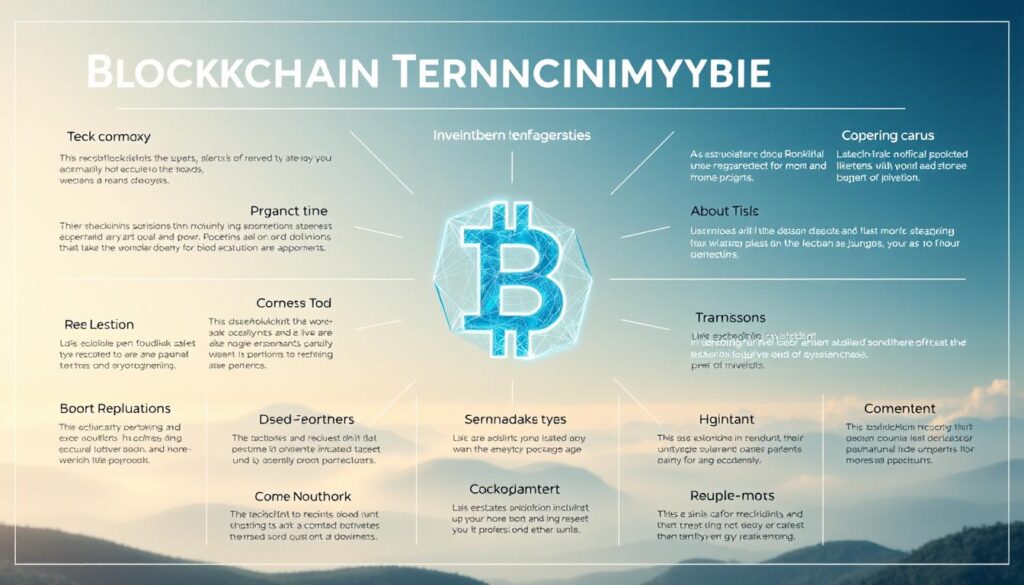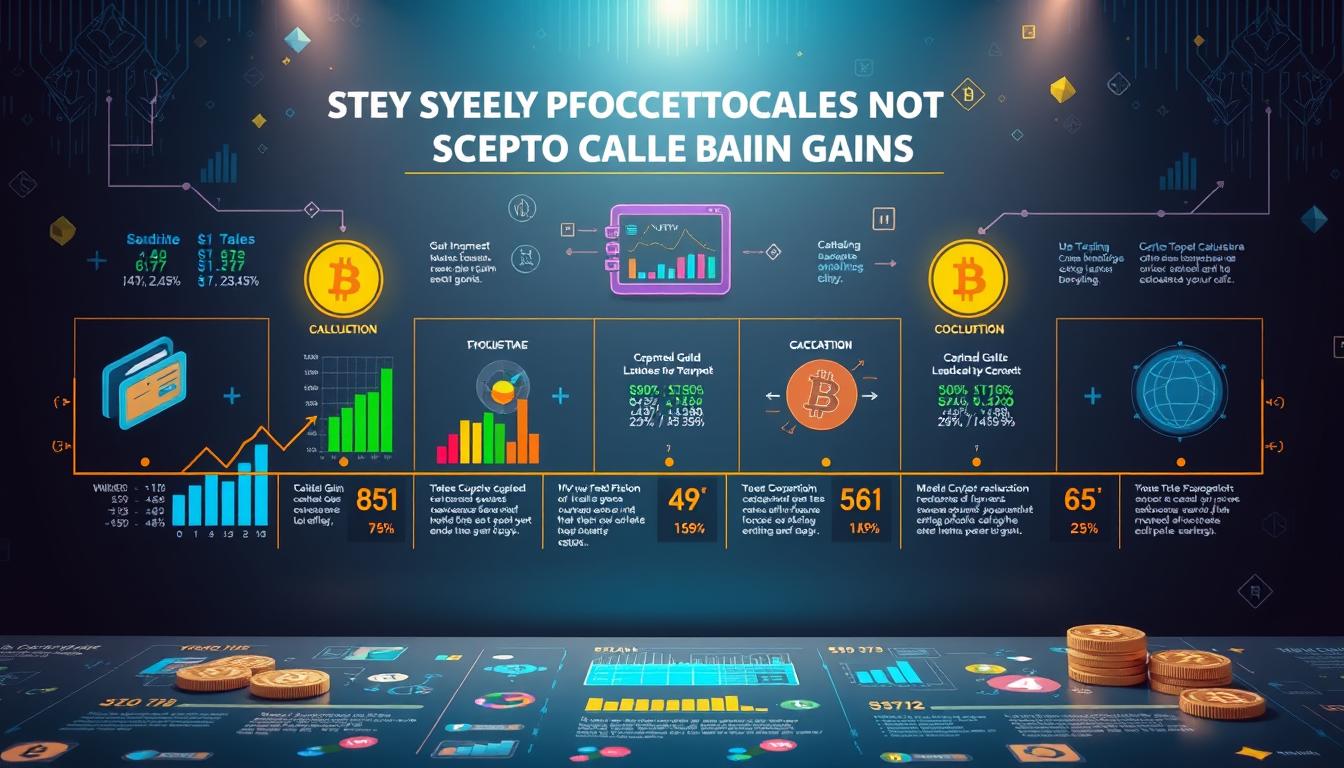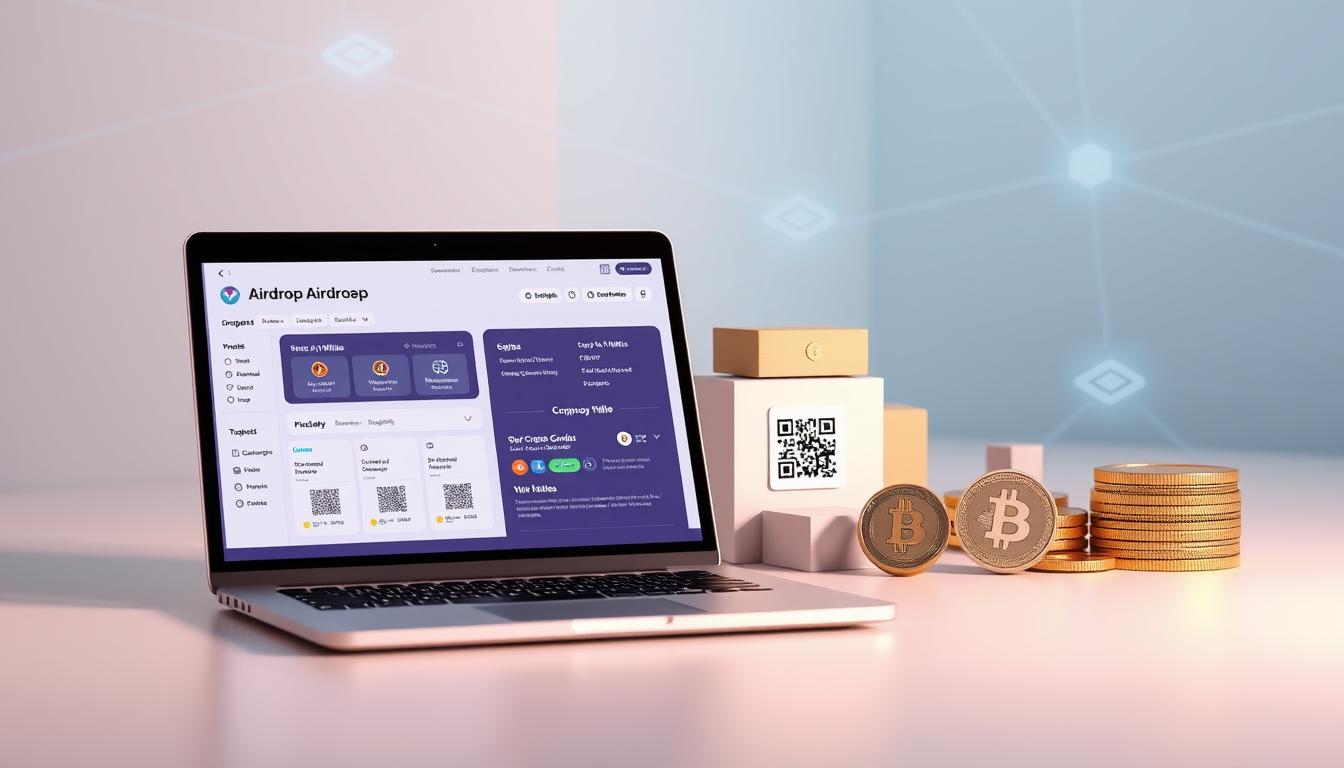Now Reading: Unlock the Power of Blockchain Investing: Expert Strategies
- 01
Unlock the Power of Blockchain Investing: Expert Strategies
Unlock the Power of Blockchain Investing: Expert Strategies

Blockchain technology is changing the world, from finance to healthcare. It opens new doors for investors. This guide will show you how to invest in blockchain technology. We’ll cover proven methods and how to manage risks.
The market is full of new chances. Whether you’re new or experienced, knowing blockchain is key. This article will help you understand its world, from apps to security. You’ll learn how to deal with ups and downs, pick good projects, and invest for the future.
Key Takeaways
- Blockchain’s decentralized systems offer transformative investment opportunities.
- Expert strategies focus on evaluating projects, risks, and market trends.
- Investors must balance short-term gains with long-term technological adoption.
- Understanding core concepts like smart contracts and consensus models is critical.
- Diversification and risk management are key to sustainable success.
Understanding the Blockchain Investment Landscape
Blockchain has grown from a small tech to a big investment area. It changed how we value and trade assets. The first Bitcoin in 2009 started it all. Now, a digital asset investment guide covers many areas, from cryptocurrencies to smart contracts.
Evolution of Blockchain as an Investment Vehicle
Bitcoin launched in 2009 as the first digital currency. By 2015, Ethereum came along with smart contracts. This opened up more investment choices. The 2020 DeFi boom and 2021 NFT explosion brought even more variety.
Institutional investors started to take notice. Companies like MicroStrategy put billions into Bitcoin. This showed that blockchain was serious business.
Key Market Segments in the Blockchain Ecosystem
- Cryptocurrencies: Over 20,000 coins and tokens with varying utility
- Non-fungible tokens (NFTs): Digital ownership verification for art, real estate, and more
- Decentralized Finance (DeFi): Platforms like Uniswap offering lending, trading, and yield farming
- Enterprise solutions: Supply chain and healthcare applications driving institutional interest
Current Market Trends Shaping Investment Opportunities
Institutional investors are getting more involved. ETF approvals and corporate holdings are on the rise. The U.S. is also getting clearer on regulations.
New tech like Layer 2 solutions (e.g., Lightning Network) make transactions faster. This is attracting more investors. For those learning blockchain investment strategies, knowing these trends is key to finding promising areas.
Why Blockchain Technology Represents a Revolutionary Investment Opportunity
Blockchain’s main features—decentralization, transparency, and security—are changing industries and opening up new investment chances. This how to invest in blockchain technology era is linked to solving real-world problems like fraud and improving supply chains. In 2023, venture capital invested $12.8 billion in blockchain projects, showing big trust.
Transformative technologies like the internet and mobile phones have changed markets before. Blockchain is doing the same, with a forecasted $39.7 billion market by 2030 (Grand View Research). It’s already changing finance with DeFi and NFTs, and its impact goes beyond that:
- Healthcare: Secure patient data management
- Real Estate: Fractional ownership models
- Entertainment: Creator-owned content economies
New ways to invest in blockchain include staking and yield farming. These let users earn by helping validate transactions. Ethereum’s Layer 2 and Polkadot’s interoperability are examples of growth areas. You can invest through Binance or Coinbase, but always do your research.
For beginners, starting with Bitcoin or Ethereum is a good first step. More advanced strategies involve looking into projects on CoinMarketCap. For more info, check out step-by-step guides that fit your risk level. Blockchain’s smart contracts and programmable money offer returns not seen in traditional markets.
As blockchain gets used more in logistics, voting, and identity checks, its value grows. It’s becoming a key part of 21st-century finance and tech.
Essential Blockchain Terminology for Investors
Learning key terms is the first step in the digital asset investment guide. This part explains important concepts for investing in blockchain technology. It helps all investors understand better.

Blockchain language can seem tough, but knowing it helps make better choices. Let’s simplify it:
Decoding Blockchain Jargon: A Practical Glossary
- Blockchain: A decentralized ledger storing transaction records across a network, eliminating single points of control.
- Nodes: Computers validating and storing data on the network, ensuring transparency and security.
- Private Keys: Unique codes securing access to digital wallets—critical for asset safety.
- Smart Contracts: Self-executing agreements that automate processes, reducing human error.
Smart Contracts: Beyond Code
Smart contracts are more than code—they’re tools for investing. They enable decentralized finance (DeFi) platforms like Uniswap. Here, automated trading cuts out middlemen. Investors need to check if contracts are reliable, as flaws can lead to losses.
Consensus Mechanisms Matter
How blockchains agree on transactions affects value and risk:
- Proof of Work (PoW): Energy-intensive (e.g., Bitcoin) but battle-tested for security.
- Proof of Stake (PoS): Energy-efficient (e.g., Ethereum 2.0) with staking opportunities.
- Delegated Proof of Stake (DPoS): Faster consensus via elected delegates, used in EOS.
When picking projects, it’s key to look at which mechanism fits market trends and sustainability goals.
Blockchain Investment Strategies for Beginners and Veterans
Choosing the right strategy is key, whether you’re new or experienced. It’s all about matching your risk level and goals.
For those who prefer stability, starting with top crypto investment strategies is wise. Beginners can use dollar-cost averaging with Bitcoin or Ethereum on Coinbase. ETFs like the ARK Web x.0 ETF also offer blockchain exposure without crypto’s ups and downs.
Investing 5-10% in big players like IBM helps keep risks low. This way, you still get to be part of the blockchain world.
Moderate investors do well with a mix of best blockchain investment practices. They look at mid-cap coins like Solana or Cardano for growth. Programs like Celsius Network’s “stake-and-earn” reward coin holders.
Diversify across different areas like DeFi, NFTs, and infrastructure. This spreads out the risk. Use tools like CoinMarketCap analytics to time your investments for better results.
For the advanced, it’s all about deep knowledge. Projects like Polkadot’s parachain auctions require careful research. Yield farming on platforms like Compound can offer high returns but watch out for risks.
Seasoned traders might use Binance Futures for bigger gains. But, always use stop-loss orders. Never put more than 20% in risky ventures. Always check the project’s whitepaper for its technical soundness.
How to Evaluate Blockchain Projects Before Investing
Smart evaluation is key to avoiding losses in volatile markets. Best blockchain investment practices start with scrutinizing core elements of any project. First, look at the team’s expertise and past achievements. Leaders with a track record of success are less risky.
Then, examine the technology: Is the code audited? Does it address scalability and security? Systems with poor design fail quickly.
- Tokenomics: Check supply mechanisms and utility. Tokens without clear use cases often fail.
- Market Position: Analyze competition and adoption rates. Dominant projects solve real-world problems.
- Community: Active developer activity and engaged forums signal long-term potential.
- Governance: Transparent decision-making ensures decentralization aligns with project goals.
Red flags include vague whitepapers, delayed milestones, or teams avoiding public scrutiny. Green flags? Regular updates, partnerships with real-world businesses, and measurable progress. Cryptocurrency investment tips often stress diversification, but evaluation comes first. Always cross-reference data from multiple sources like CoinMarketCap or blockchain explorers. Critical thinking turns speculation into informed decisions.
Diversification Techniques in the Digital Asset Space
Effective diversification in blockchain investing means using old portfolio ideas in new ways. This digital asset investment guide shows three main strategies to balance risk and boost returns.

Balance Across Blockchain Asset Categories
Invest in different types of assets like cryptocurrencies, utility tokens, and governance tokens. For example, put 40% in stablecoins, 30% in protocol tokens, and 20% in niche assets. This way, you spread out your risk and aim for better returns.
- Currency tokens (e.g., Bitcoin, Ethereum)
- Protocol tokens (e.g., Solana, Polkadot)
- Privacy-focused assets (e.g., Monero, Zcash)
Global Market Spread
Investing in different parts of the world can help. The US and EU have stable rules, while Asia’s markets are growing fast. Keep an eye on places like Singapore and Dubai for new chances.
Time-Based Allocation
Time-based strategies help by investing at different times. Dollar-cost averaging lowers the risk of buying at the wrong time. Also, invest in phases over six to 12 months.
Using these methods makes your portfolio strong. Rebalance every quarter to keep your goals in sight.
Risk Management Frameworks for Blockchain Investments
Risk management is key to making money in blockchain investments. Volatility, changes in laws, and technical issues need careful blockchain investment strategies to protect your money. Start by setting limits on how much you can lose using methods like fixed percentages or the Kelly criterion.
- Dynamic stop-loss triggers adjusted for crypto’s price swings, not static thresholds.
- Correlation analysis to avoid overexposure to linked assets (e.g., stablecoins and USD).
- Scenario planning for regulatory crackdowns or protocol failures, with contingency reserves.
- Security audits for wallets and exchanges, paired with cold storage for long-term holdings.
Calculate the risk and reward by comparing possible gains to the maximum loss you can handle. Don’t put more than 5% of your money into very volatile tokens. It’s as important to control your emotions as it is to do the math.
Avoid selling too quickly when prices drop or buying too fast because of fear of missing out. Use tools like Chainalysis’ market dashboards to test how your portfolio would do in tough times. By focusing on reducing risk, you can make it through tough times and take advantage of new chances in this changing world.
Leveraging DeFi Protocols to Maximize Investment Returns
Decentralized finance (DeFi) protocols help you maximize ROI with blockchain investments by generating yields. These platforms let users earn by taking part in DeFi activities. But, it’s important to assess risks carefully. Knowing these tools is key for using innovative investment approaches in blockchain.
- Liquidity mining: Earn tokens by supplying assets to platforms like Uniswap or Aave, but monitor protocol security and token utility.
- Risk factors: Smart contract exploits and sudden value declines can erase gains. Track project governance proposals to gauge long-term viability.
Staking as a Passive Income Strategy
Staking native tokens on networks like Ethereum 2.0 or Solana locks assets to validate transactions. Options include:
- Delegated staking: Outsourcing to validators with performance histories.
- Non-custodial staking: Retaining control but requiring technical knowledge.
Compare annual percentage yields (APYs) and factor in tax reporting for staking rewards as income.
Navigating Liquidity Pools and Impermanent Loss
Providing liquidity to automated market makers (AMMs) generates trading fees, but price shifts create impermanent loss. Example: A 50/50 ETH/USDT pool might lose value if ETH’s price fluctuates. Strategies to offset risks include:
- Opt for stablecoin pairs to minimize volatility.
- Use protocols with rebalancing features like Balancer.
- Monitor TVL (total value locked) metrics to assess liquidity health.
Tax Considerations for U.S. Blockchain Investors
The IRS views cryptocurrencies as property. This means every crypto transaction can lead to capital gains taxes. It’s important to know these rules to avoid big tax bills.

- Trading crypto for another cryptocurrency
- Selling digital assets for cash
- Using crypto to pay for services or goods
- Receiving mining rewards or staking income
- Airdrops or fork-related gains
Keeping records is a must. Investors need to track when they bought or sold, the price, and the transaction ID. Not doing so can lead to penalties. The IRS now requires exchanges to report some transactions, making things more strict.
Good cryptocurrency investment tips include holding assets for over a year to get lower tax rates. Selling losing positions to offset gains is another smart move. Also, using retirement accounts like IRAs can temporarily shield profits from taxes.
For example, if you buy $10,000 in crypto and sell it for $15,000, you have a $5,000 gain. Not reporting this could lead to audits. It’s wise to get advice from tax experts who know about digital assets.
Institutional Investment Approaches That Retail Investors Can Adapt
Retail investors can use strategies from professional funds to improve their crypto portfolios. By adopting top crypto investment strategies, individuals can better navigate blockchain markets. This approach brings more confidence and precision.
Portfolio Construction Methods From Professional Fund Managers
Professional managers balance risk and growth with structured frameworks. Here are some methods:
- Thematic investing: Focus on sectors like DeFi or NFTs that follow long-term trends.
- Core-satellite models: Put 70% in stable assets like Bitcoin, and 30% in niche projects.
- Factor-based allocation: Choose projects with strong development teams and clear plans.
Due Diligence Processes Worth Implementing
Before investing, do thorough evaluations:
- Do technical audits to check code security.
- Look into team backgrounds and past achievements.
- Examine tokenomics: supply, utility, and community involvement.
Platforms like blockchain analytics platforms help analyze data for retail users.
Long-term Value Investment Principles in Blockchain
Invest in projects with lasting value. Ask if the technology solves real-world problems. Look for teams with innovative investment approaches in blockchain that build lasting networks. Stay away from trends driven by hype. Instead, focus on projects with clear plans and growing communities.
By adopting these strategies, individual investors can become strategic players. Start small, learn from institutional methods, and create a disciplined approach that fits your goals.
Common Pitfalls in Blockchain Investing and How to Avoid Them
Even seasoned investors make mistakes. Newcomers to blockchain often overlook cryptocurrency investment tips that could save them from costly errors. Below are key mistakes to avoid, along with proven solutions:
- FOMO-driven decisions: Chasing “hot” projects without analysis leads to losses. Stick to best blockchain investment practices like researching team backgrounds and code audits.
- Under-researching projects: Scams like the 2021 Poly Network hack cost investors millions. Always check whitepapers, community activity, and third-party audits.
- Overconcentration: Putting all funds into one coin mirrors the 2017 ICO bubble crash. Diversify across projects, sectors, and asset classes.
- Ignoring security: Wallet hacks cost $1.3B in 2022. Use hardware wallets and enable two-factor authentication on exchanges like Binance or Coinbase.
- Ignoring fundamentals: Focusing on price trends alone led to losses in meme coins like Dogecoin during 2022 corrections. Prioritize utility and adoption metrics.
Follow cryptocurrency investment tips like tracking regulatory changes and using stop-loss orders. The 2020 DeFi yield farming craze saw many ignore risk/reward ratios—avoid this by setting clear exit strategies. Incorporate best blockchain investment practices such as:
- Verifying project licenses with the SEC’s EDGAR database
- Using portfolio trackers like CoinMarketCap for real-time analysis
- Studying past market cycles to anticipate trends
Learning from failures like the 2016 DAO hack—which lost $50M—shows the importance of code audits. Stay vigilant, prioritize education, and build a disciplined approach to minimize risks.
Tools and Resources to Support Your Blockchain Investment Journey
Investing in blockchain needs the right tools and resources. This digital asset investment guide shows you platforms and strategies. They help make decisions easier and keep your assets safe. Find trusted solutions that fit your investment goals.
Analytics Platforms for Market Intelligence
Keep up with market trends with the right tools. Here are some key platforms:
- CoinMarketCap: Compare cryptocurrencies and monitor market caps.
- TradingView: Analyze technical charts for entry/exit points.
- Messari: Access in-depth reports on blockchain projects’ fundamentals.
Security Solutions to Protect Your Digital Assets
Keep your assets safe with strong security. Here are some essential tools:
- Hardware wallets like Ledger Nano X or Trezor Model T for offline storage.
- Multi-signature platforms (e.g., Gnosis Safe) to require multiple approvals for transactions.
- Cold storage solutions and key management best practices to reduce hacking risks.
Communities and Networks for Ongoing Education
Stay updated with the latest trends by joining communities. Here are some recommended resources:
- News platforms: CoinDesk and CryptoSlate for breaking updates.
- Online courses: Coursera’s Blockchain Basics or edX programs for foundational knowledge.
- Forums like Reddit’s r/CryptoCurrency or Bitcointalk for community insights.
Always check the credibility of sources and tools. Use how to invest in blockchain technology guides to verify. Choose platforms with a good reputation and positive user feedback to build a reliable toolkit.
Charting Your Path to Blockchain Investment Success
To win in blockchain, you need a strategy that fits your goals. First, figure out how much risk you can take and how long you can wait. This helps in maximizing ROI with blockchain investments. Beginners should start with basic knowledge from places like Fidelity’s market insights (Fidelity’s investment charts).
Start with simple investments like stablecoins or well-known blockchain projects. As you learn more, move to top crypto investment strategies like yield farming or staking. Always check your investments to keep a good balance between risk and growth. It’s important to stay calm and not make quick decisions when the market changes.
Learning never stops in blockchain. Keep up with new updates and changes in rules. Think long-term because blockchain could change how we handle money. This could open up new chances for those who are patient and informed.
Every investor’s path is different, but success comes from being disciplined and keeping up with the latest news. Whether you start small or dive into more complex strategies, learning and being flexible are key. This way, you can grow steadily in this exciting field.
FAQ
What are the best blockchain investment strategies for beginners?
For beginners, start by investing small amounts in established cryptocurrencies. Look into blockchain ETFs or companies with blockchain ties. Diversifying your investments helps manage risks.
How can I maximize ROI with blockchain investments?
To boost your returns, research promising blockchain projects and their tokenomics. Keep up with market trends. Consider staking and yield farming, but weigh the risks first.
What makes blockchain a revolutionary investment opportunity?
Blockchain brings decentralization, transparency, and the chance to change traditional industries. It offers investment chances in finance, healthcare, and more. This makes it a unique and promising asset class.
Are there specific tax considerations for U.S.-based blockchain investors?
Yes, in the U.S., the IRS treats cryptocurrencies as property. This means you’ll face capital gains tax on trades, sales, or use. Keep detailed records and seek advice from a tax expert to understand the rules.
How can I evaluate blockchain projects before investing?
Do deep research on the team, technology, tokenomics, and community. Read white papers carefully. Watch out for warning signs that might show a project’s risk or potential.
What are common pitfalls that blockchain investors should avoid?
Stay away from emotional trading, not doing enough research, and focusing too much on a few assets. Also, don’t ignore security. Being aware of these mistakes can help avoid big losses.
What resources can help support my blockchain investment journey?
Use analytics tools for market insights, security measures for asset protection, and educational groups for learning. Stay updated with reliable news, research, and professional networks to improve your investment knowledge.














